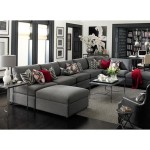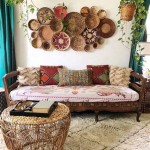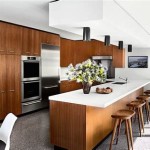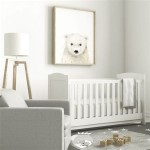How to Decorate an L-Shaped Lounge Dining Room
An L-shaped lounge dining room presents a unique design challenge and opportunity. The configuration necessitates careful consideration of space planning, furniture arrangement, and visual flow to create a cohesive and functional living area. Successfully decorating this type of space requires understanding how to define distinct zones while maintaining a sense of unity and avoiding a disjointed aesthetic. This article will explore effective strategies for decorating an L-shaped lounge dining room, focusing on optimizing space, establishing visual connections, and creating a harmonious atmosphere.
The defining characteristic of an L-shaped room is its inherent division into two main areas. Typically, one section is designated for the lounge, serving as a relaxation and entertainment space, while the other is allocated for dining, providing a setting for meals and social gatherings. The connecting point, the "elbow" of the L, becomes a pivotal area that requires careful management to ensure a smooth transition between the two zones. The dimensions of each section can vary significantly, influencing the design approach. A longer "leg" might be suitable for the lounge, allowing for more expansive seating, while a shorter one might be ideal for a more intimate dining area. The overall goal is to balance the proportions and create a comfortable and inviting environment in both spaces.
Defining Zones and Establishing Flow
One of the primary challenges in decorating an L-shaped lounge dining room is defining each zone while maintaining a seamless flow between them. Without clear demarcation, the room can feel haphazard and lack a sense of purpose. Several techniques can be employed to effectively separate the lounge and dining areas without creating physical barriers.
Strategic furniture placement is paramount. Consider using a large sofa or a sectional as a visual divider between the lounge and dining spaces. The back of the sofa, facing the dining area, naturally defines the boundary without completely obstructing the view or hindering movement. Alternatively, a console table or a bookshelf placed perpendicular to the wall can serve a similar purpose, offering storage and display options while subtly delineating the two zones. These pieces should complement the overall style and color palette of the room to maintain visual consistency.
Area rugs are another powerful tool for zone definition. A rug placed beneath the lounge seating area creates a visual anchor, defining the conversational space and grounding the furniture. Similarly, a rug beneath the dining table delineates the dining area and provides a comfortable surface underfoot. Choose rugs that are appropriately sized for each space; a rug that is too small will appear disjointed, while a rug that is too large will overwhelm the area. Consider the shape of the rug as well; a rectangular rug might work well in the lounge, while a round or oval rug could soften the angles of a square dining table.
Color and pattern can also be used to create subtle distinctions between the lounge and dining areas. While maintaining a cohesive color scheme is important, using slightly different shades or introducing a complementary accent color can help to visually separate the two spaces. For example, the lounge area might feature a warmer color palette with richer textures, while the dining area might incorporate cooler tones and lighter materials. Similarly, incorporating different patterns in each zone can add visual interest and further define the spaces. However, be mindful of overwhelming the room with too many competing patterns; aim for a harmonious balance.
Lighting plays a critical role in defining zones and creating ambiance. Use a combination of ambient, task, and accent lighting to highlight specific areas and create a layered lighting scheme. In the lounge area, consider using floor lamps and table lamps to create a warm and inviting atmosphere, while in the dining area, a statement pendant light above the dining table can serve as a focal point. Dimmers on all lighting fixtures allow for adjusting the light levels to suit different activities and moods. Strategic placement of lighting fixtures can also help to draw the eye and guide movement between the two zones.
Optimizing Space and Furniture Arrangement
Effective space optimization is crucial in an L-shaped lounge dining room, especially if the space is limited. Maximizing functionality while maintaining a sense of openness is key. Carefully consider the dimensions of the furniture and how it will fit within the available space. Avoid overcrowding the room with too much furniture, as this can make it feel cramped and uncomfortable. Prioritize multifunctional pieces that can serve multiple purposes.
In the lounge area, consider using modular seating that can be rearranged to suit different needs. A sectional sofa with detachable components can be easily configured to accommodate different group sizes and activities. Ottomans can serve as extra seating, footrests, or even coffee tables. Wall-mounted shelving units can provide ample storage without taking up valuable floor space. Choose furniture with clean lines and a minimalist design to create a sense of spaciousness.
In the dining area, a table with extendable leaves can be a valuable asset, allowing for accommodating larger groups when needed while remaining compact for everyday use. Consider using chairs that can be easily stacked or folded away when not in use. A sideboard or credenza can provide storage for dinnerware and linens while also serving as a serving surface. Opt for furniture with a light and airy feel to prevent the dining area from feeling heavy or cramped. Mirrors can be strategically placed to reflect light and visually expand the space.
Pay attention to the traffic flow within the room. Ensure that there is ample space for people to move freely between the lounge and dining areas without bumping into furniture. Avoid placing furniture in pathways that obstruct movement. Consider the placement of doorways and windows when planning the furniture arrangement. Natural light is a valuable asset, so avoid blocking windows with large pieces of furniture. Create a clear and intuitive flow to make the room feel welcoming and comfortable.
Vertical space is often overlooked in decorating. Utilize wall space by hanging artwork, mirrors, or shelves. Vertical shelving units can provide ample storage without taking up valuable floor space. Tall plants can add visual interest and create a sense of height. Consider painting the walls in a light color to make the room feel more spacious and airy. Vertical stripes can also visually elongate the walls and create a sense of height.
Creating Visual Cohesion and a Harmonious Atmosphere
While it is important to define the lounge and dining areas, it is equally important to create a sense of visual cohesion and a harmonious atmosphere throughout the entire space. The goal is to create a unified design that feels intentional and well-coordinated. This can be achieved through careful consideration of color palettes, materials, textures, and decorative elements.
Choose a cohesive color palette that flows seamlessly between the lounge and dining areas. Select a dominant color that will serve as the foundation for the design, and then incorporate complementary accent colors to add visual interest. Consider using different shades and tones of the same color to create depth and dimension. Neutral color palettes are a safe and versatile option, providing a blank canvas for adding pops of color through accessories and artwork. Warm color palettes can create a cozy and inviting atmosphere, while cooler color palettes can create a sense of calm and serenity.
Incorporate similar materials and textures throughout the room to create a sense of continuity. For example, if the lounge area features leather seating, consider incorporating leather accents in the dining area, such as leather placemats or a leather-framed mirror. If the lounge area features wooden furniture, consider using wooden accents in the dining area, such as a wooden serving bowl or wooden candle holders. Mixing different textures, such as smooth and rough, can add visual interest and create a more dynamic design. However, be mindful of overdoing it; aim for a balanced and harmonious mix of materials and textures.
Use decorative elements, such as artwork, mirrors, and accessories, to tie the lounge and dining areas together. Choose artwork that complements the overall style and color palette of the room. Mirrors can be used to reflect light and visually expand the space. Accessories, such as vases, candles, and throw pillows, can add pops of color and personality. Consider using a common theme or motif throughout the room to create a sense of unity.
Pay attention to the small details, as they can make a big difference in the overall look and feel of the room. Coordinate the hardware on the furniture, such as the drawer pulls and door handles. Choose window treatments that complement the overall design. Use consistent lighting fixtures throughout the room to create a cohesive lighting scheme. By paying attention to these small details, one can create a polished and refined look that elevates the entire space.
Ultimately, decorating an L-shaped lounge dining room is about creating a space that is both functional and aesthetically pleasing. By carefully considering space planning, furniture arrangement, and visual flow, one can transform this challenging layout into a comfortable and inviting living area. Remember to prioritize functionality, maintain visual cohesion, and create a harmonious atmosphere to achieve a successful and satisfying design.

L Shaped Living Dining Room The Biggest Decorating Mistake I Ever Made And How Fixed It Michael Helwig Interiors

L Shaped Living Room Layout Ideas How To Arrange Your Furniture

L Shaped Living Room Layout Ideas How To Arrange Your Furniture

L Shaped Living Dining Room The Biggest Decorating Mistake I Ever Made And How Fixed It Michael Helwig Interiors

L Shaped Living Room Layout Ideas How To Arrange Your Furniture Livingroom

How To Decorate L Shaped Living Rooms Doğtaş

L Shaped Sectional Sofa Designs For Your Home Design Cafe

L Shaped Living Room Layout Ideas How To Arrange Your Furniture

L Shaped Living Dining Room The Biggest Decorating Mistake I Ever Made And How Fixed It Michael Helwig Interiors

Room Arrangements For Awkward Spaces L Shaped Living Layout Dining
Related Posts







